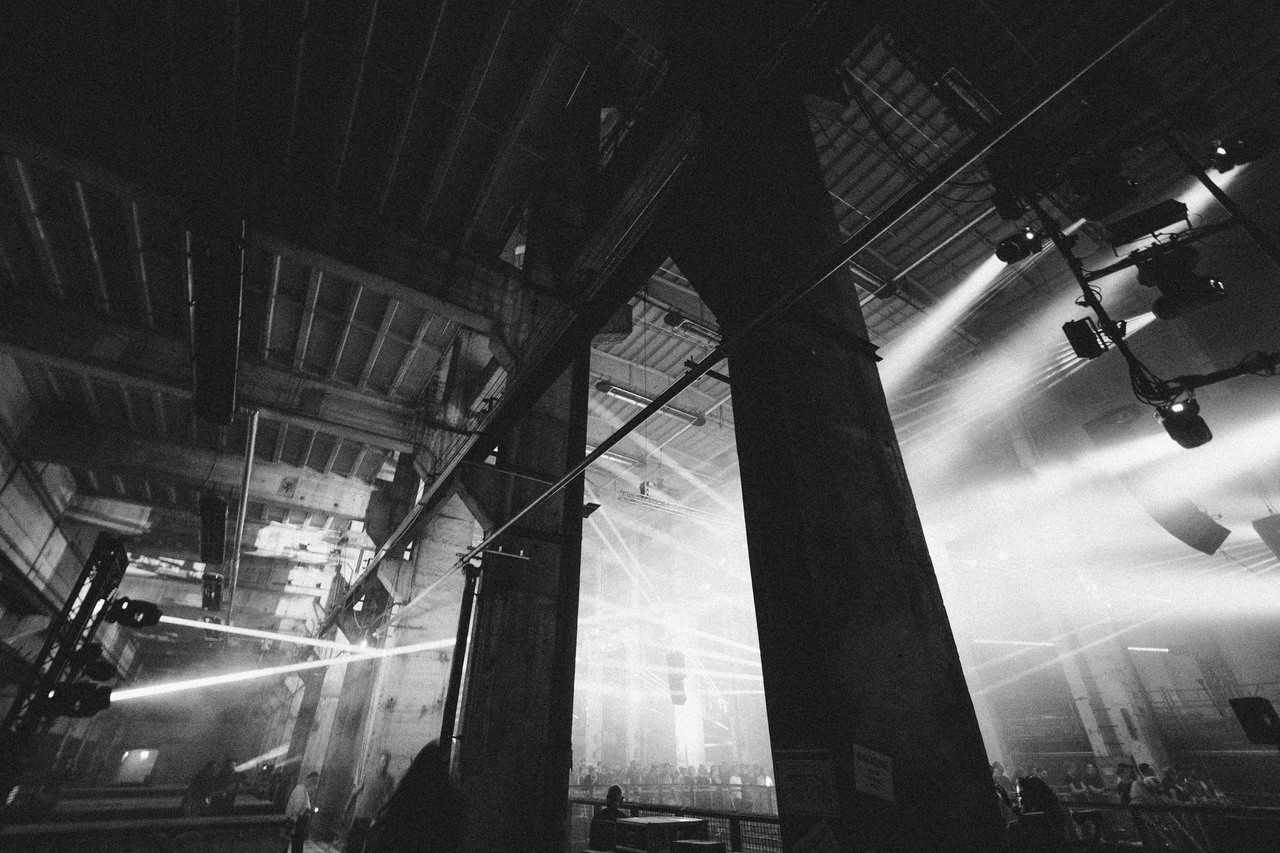Written by:
Simona Mantarlian
Share article:
A Sonic Retribution
I hear it sometimes from your basic, party people who report feelings of anxiety and deficit of adaptation after visiting this place, rather than what they would expect in terms of getting wasted on a fun night out. And these are people you would never see admitting such profound feelings to anyone else than their shrink, and who would seldom get to feel this strongly about music. I think it’s only fair. This alleged angst that some people experience when faced with the abrasive techno culture in Berlin is, to me, a familiar echo of the feeling I would normally get during my teen years at their parties, while listening to Lustmord on the headphones in a corner and avoiding purposely shallow behaviors resembling dance or any other human interaction. And judging by this law of balance and polarity, Atonal would feel, in this sense, an epitome of cultural and sonic retribution, if I had to recur to a subjective analogy. A less subjective, genus-differentia type of definition, would be quite challenging to put together, while thinking in retrospective at the proportion of the festival, as long as it would require thinking of a category that Atonal would individualize as a part of. Its massive attempt at connecting dots, culturally, as well as the precision with which the ambitious project was met, makes it an event in time, space and sound that manages to pose enough questions on the imaginarium it involves.
Some ravers out there struggle to justify their weekend escapades as a “club culture”, and as much would this hedonistic view struggle for our attention, it often pales while confronted to its real meaning, in terms of intrinsic value. Atonal is not club culture, in that sense, even though its after show-sets that blasted in the basement of Tresor or through the Void Air Motion sound system at stage Globus kept a dark-clad mass of humans dancing until noon, with some clever and pretty challenging, not so easy-listening play list choices.
And this challenging quality is why a phenomenon as Atonal feels necessary in defining value and embodying its furthest limits, to which one can imagine it staged and performed in real life. Being a singular event that comprises of a collection of events, screenings, concerts and parties, Atonal concentrates organically that which makes electronic music a part of our present civilization and intellectual capital, but even more than that, a coherent and unabbreviated lifestyle. Fully embraced in all that its program offers, this festival gives the impression of a cultural movement - if you want - that reverses, hacks and dynamites all the principles of music and image as means of entertainment. You get to see the often unseen, stealth, network of the underground coagulate into a micro-universe that allows it to express naturally, taking as much space as possible and blasting with the tremendous force that it was initially intended to contain.




